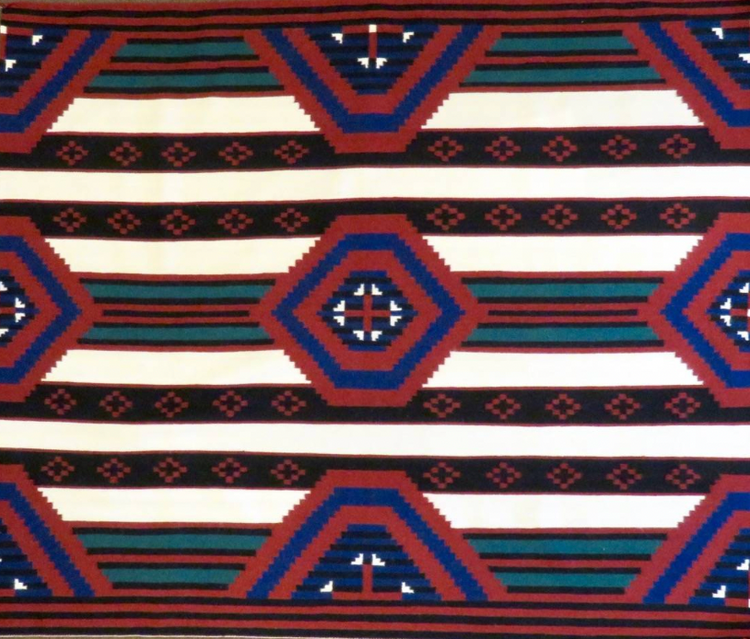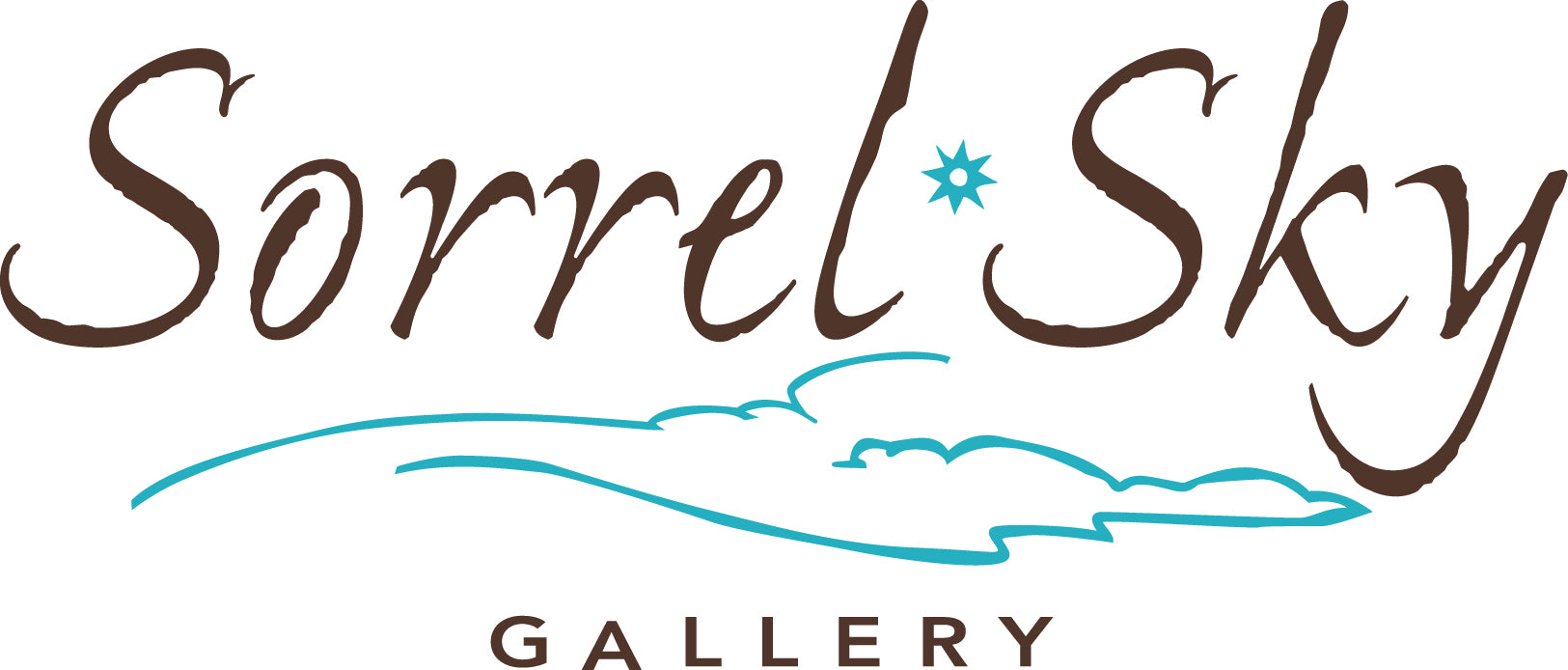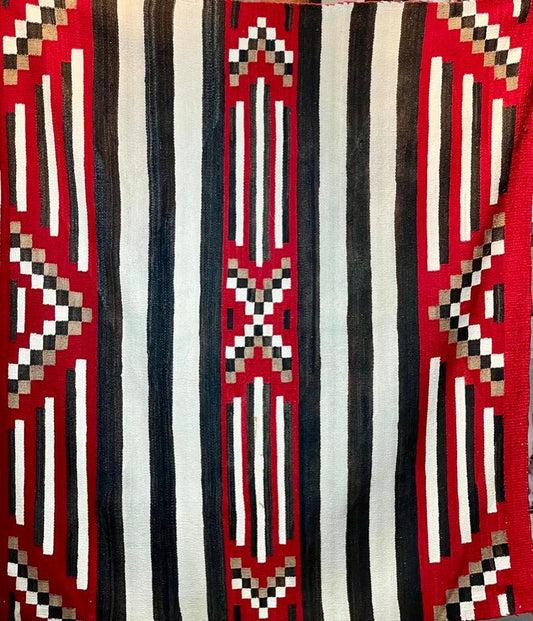Collection: Chief / Blanket / Revival Weavings
No More Products
-
Sold

Prior to the 1880s nearly all Navajo weaving was made to wear. Chief Blankets were the best known, but other styles where the stripes ran perpendicular to the ground, were also popular. In the late 1800s into the early 1900s, weavings made of Germantown yarn were popular. This commercial yarn was provided to the weavers by the traders to speed up production and many of the early Germantown weavings had a visual connection to elements in the old wearing blankets.
Beginning in the early 1900s, when Navajo weaving was making its transition to becoming a floor rug, these patterns gradually disappeared, being replaced by the regional styles found at different trading posts.
In the later part of the 20th century, as travel became easier and weavers began to see examples of the old weaving in museums and publications, many began to experiment with recreating the designs and visual effects of the old-style blankets.
Today, there are many weavers who create these modern Chief/Revival pieces. They have a connection to the old but are innovative in their interpretations of the designs. These weavings are an important bridge between the past and the present.

Prior to the 1880s nearly all Navajo weaving was made to wear. Chief Blankets were the best known, but other styles where the stripes ran perpendicular to the ground, were also popular. In the late 1800s into the early 1900s, weavings made of Germantown yarn were popular. This commercial yarn was provided to the weavers by the traders to speed up production and many of the early Germantown weavings had a visual connection to elements in the old wearing blankets.
Beginning in the early 1900s, when Navajo weaving was making its transition to becoming a floor rug, these patterns gradually disappeared, being replaced by the regional styles found at different trading posts.
In the later part of the 20th century, as travel became easier and weavers began to see examples of the old weaving in museums and publications, many began to experiment with recreating the designs and visual effects of the old-style blankets.
Today, there are many weavers who create these modern Chief/Revival pieces. They have a connection to the old but are innovative in their interpretations of the designs. These weavings are an important bridge between the past and the present.

